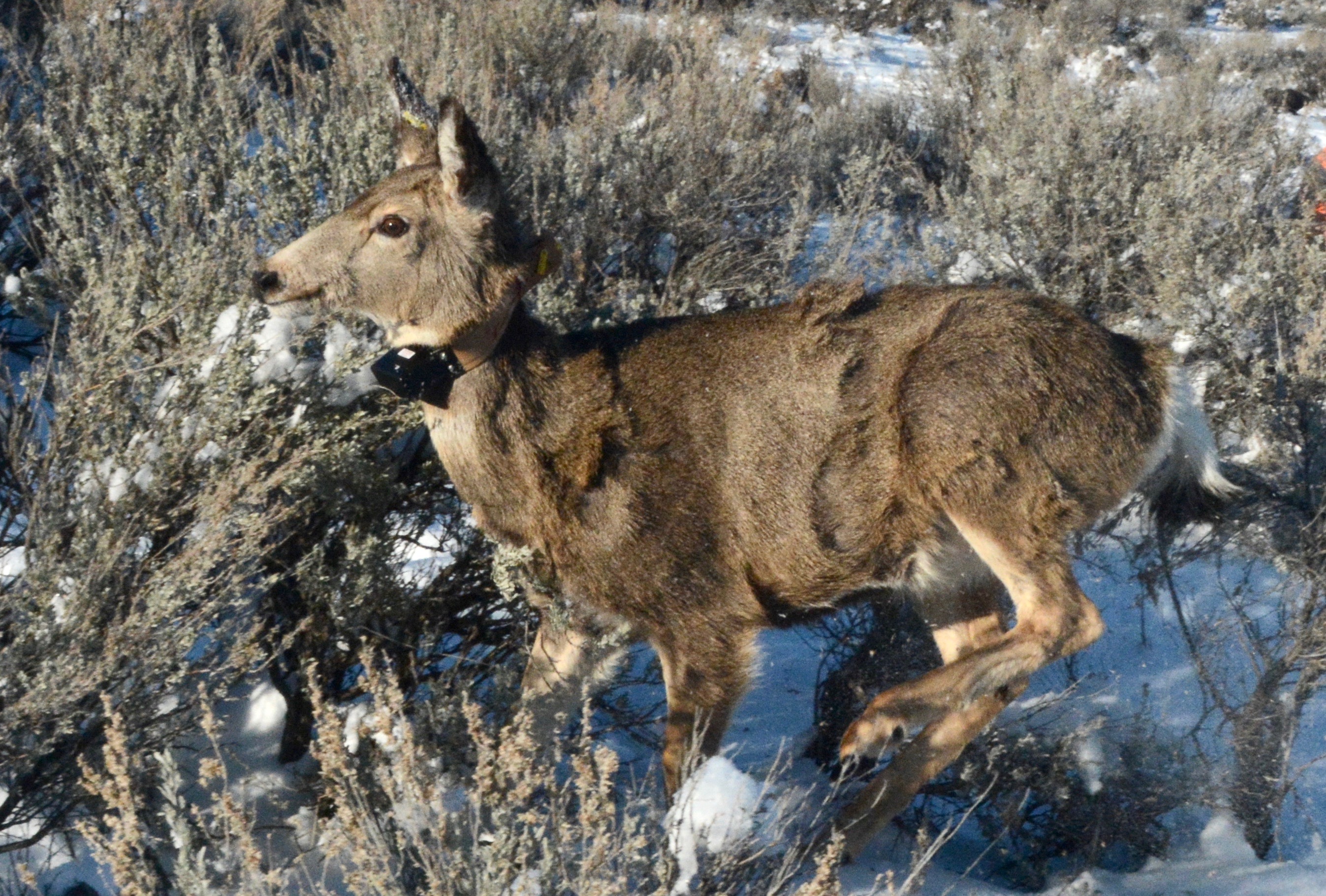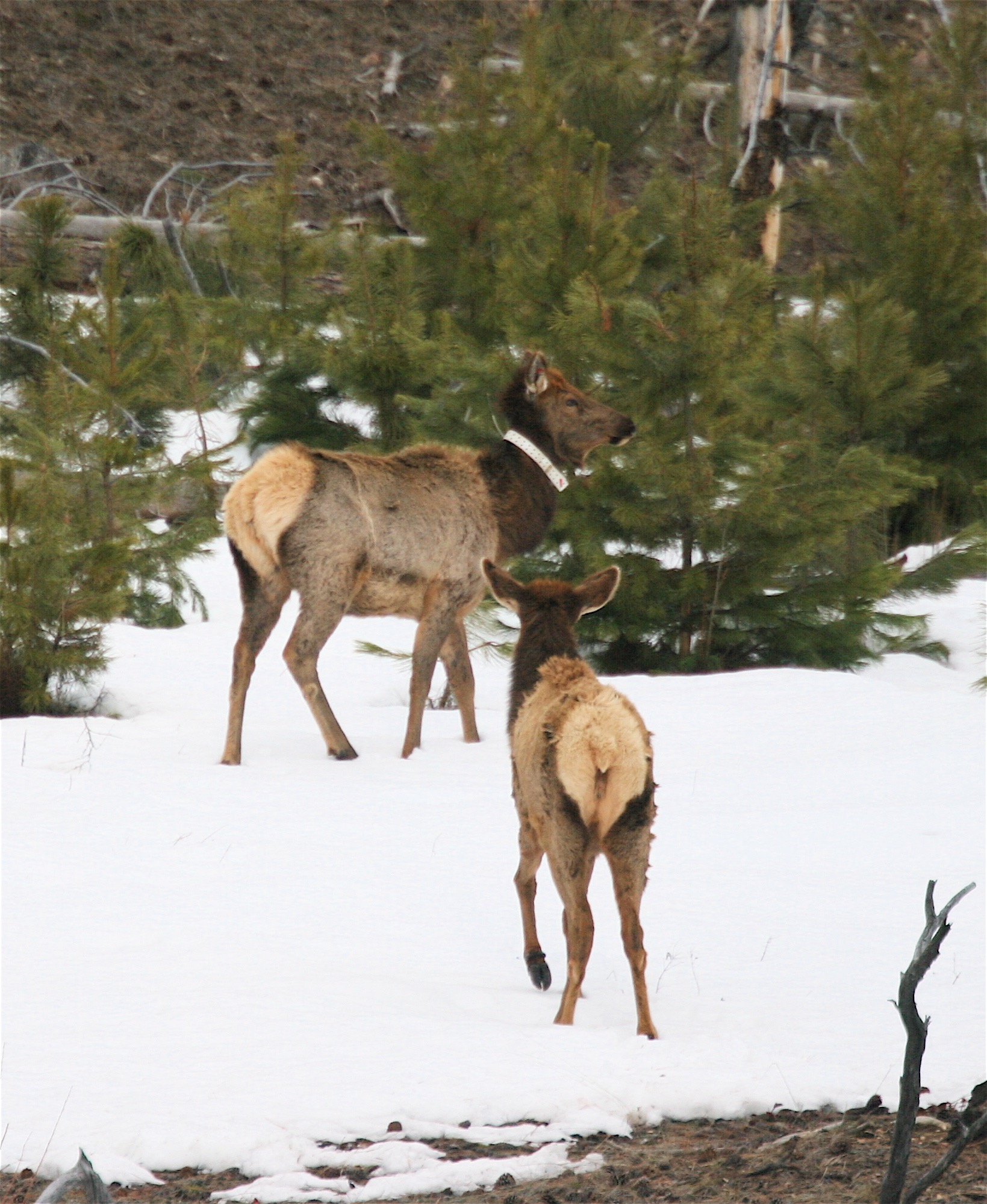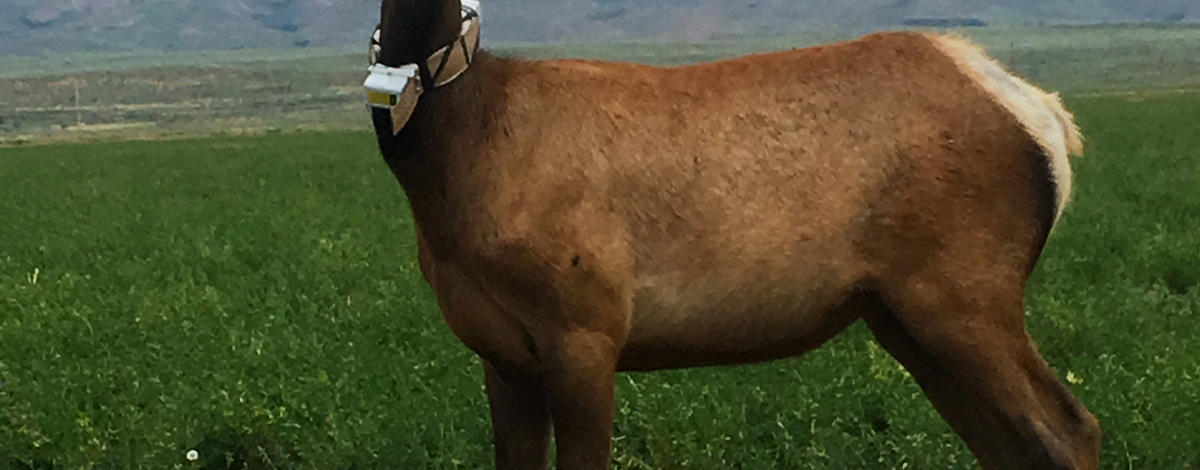Most of Idaho’s big game animals have moved out of the high country and onto lower-elevation winter range as part of their semi-annual migration. Deer, elk and other big game animals descend by the dozens, hundreds or even thousands, and while this migration has been repeated for eons, it’s more complex and varied than one might assume, and biologists are constantly learning more about it.

Fish and Game crews have spent thousands of hours capturing adult and young deer, elk, pronghorn and other big game and fitting them with GPS tracking collars, which allows them to see what individual animals do and get a better sense of what is happening to the larger population. GPS collars are a critical tool that not only show an animal’s location, but whether it’s alive, and if it dies, a biologist can use the collar to find the animal and determine what likely killed it. That helps them better understand the driving forces behind big game populations and become better wildlife managers.
Watching with eyes in the sky
Radio collars were used for decades to track animals, but in the early 2000s, GPS collars that link to satellites became available and largely have replaced radio collars. GPS collars give biologists the ability to track animals without having to follow them in the field, which they had do with radio collars because they had to be reasonably close to pick up the radio signal. That made tracking individual animals over long periods and long distances difficult, especially during winter when traveling can be challenging.
A biologist can track a GPS collar in real time from any computer and know exactly where it is, where it has been, night or day and in any weather. They can even track individual animals for years, and watch the seasonal patterns of that individual and get an idea what its herd mates might be doing.
The routes of many of Idaho’s big game herds are relatively well known, but when the animals essentially all look the same, are the same ones retracing these seasonal migrations? GPS collars are helping to answer that question.

Mule deer: the traditionalists
Through GPS collar data, biologists have confirmed that mule deer are pretty consistent.
“About 99 percent of them will go to the same winter range, and then go back to the same summer area,” Fish and Game’s Deer/Elk Coordinator Rick Ward said.
That consistency can work to their benefit or detriment because mule deer will remain faithful to certain places even if it no longer provides good habitat. There are many instances of mule deer returning to winter or summer range that was burned by wildfires, and rather than seeking better habitat, they will try to eke out a living in the degraded terrain.
That fidelity to certain areas also tends to be passed through generations, so herd size and health can fluctuate based on the quality of the habitat those animals rely on. While that’s the general rule for the species, individual animals will still buck the trend.
Biologists in the winter of 2015 put a GPS collar on a mule deer fawn in an area west of Dubois. The following spring, it traveled north following the spring green up, and by late July/early August, it reached the Belgrade, Mont. area and lived on media-mogul Ted Turner’s ranch.
But this deer didn’t return to Idaho like most mule deer do in the fall, and it was killed by a mountain lion about a year later and 120 miles from where it was collared.

The roamers
Because elk mostly look alike, particularly cow elk, it would be difficult to know exactly what individuals are doing without GPS collars. For example, if you have roughly the same sized elk herd year after year on a parcel of winter range, you might assume it’s the same animals, or same family groups. But GPS collars have shown that although herd movements are fairly predictable, individual elk don’t always follow the herd.
“What we see with GPS collars, especially with cow elk, is that they will trade winter ranges,” Ward said.
On numerous occasions, cows will be relatively faithful to their summer range, but roam onto different winter ranges each year.
One example was a collared cow elk that spent a winter in the Lowman area along the upper South Fork of the Payette River, then the following winter in the Blacks Creek area, east of Boise. Then she headed north to winter in the Clayton area along the upper Salmon River between Stanley and Challis only to return to the Lowman area the following winter.
While not every cow elk wanders that prolifically, shifting winter ranges is more common among elk than expected, and sometimes, it’s whole herds that move.
During the brutal 2016/17 winter commonly as “snowpocalypse,” a herd of elk found its way onto agriculture lands near Weiser where they had never wintered before. Then the following winter, which had normal winter weather, they returned and have become more common, and more problematic, because they can cause damage to agriculture land.
GPS collars also showed that some elk herds migrate in the spring to traditional summer range, but when hot weather dries out forage, they drop down to irrigated agriculture fields, and some won’t leave even when natural forage improves. These elk herds create recurring problems by causing hundreds of thousands of dollars damage to crops, and some herds won't leave and become multi-generational as cows gives birth to calves that know only those agriculture areas as home.
Not all migration revolves around summer/winter ranges
White-tailed deer have a reputation for being homebodies, and in some cases, they live their entire lives within several square miles, but GPS collars have shown there’s a twist to this behavior. Whitetail does will walk, or even swim, significant distances when weather or forage do not appear to be the driving motivator.

Biologists saw this unexpected behavior after a whitetail doe was captured and fitted with GPS collar in April, 2017 southeast of Moscow. She remained there for about two months, then in mid June, she left the area.
Two days and 20 miles later, she arrived and temporarily settled on a canyon rim near the Snake River, where she stayed about a month, then returned to the area where she was originally captured.
Biologists in the Panhandle saw this behavior repeated after they captured and collared whitetails in early 2020 and saw similar spring movements. Most does in the Panhandle study stayed close to where they were collared, but several left their respective home areas within a few days of each other in May.
One doe collared on the east side of Priest Lake headed north then west, swam across Priest Lake and eventually end up on the west side of Priest Lake near Kalispell Bay. Two other does left their wintering areas at about the same time and made treks over 20 miles in two days. They began their journey together then split off, one heading for Upper Priest River and the other settling near Trapper Creek, which flows into the northeast portion of Upper Priest Lake. Another doe collared north of the town of Priest River traversed up and over the Selkirk Mountains to wind up near Sandpoint.
Several of the does later returned to their original locations, and biologists can only speculate, but they suspect the deer were searching for good places to bear fawns.
“Typical fawning habitat contains quality forage, water and security cover in a relatively small area, so does don’t have to wander far from their young to get what they need,” regional wildlife manager Micah Ellstrom said. “But it can be a costly energetic move to travel that far right before giving birth.”
This is another instance where GPS collars allow biologists to learn about individuals and apply that to the larger population.
“We’ve seen some very interesting and impressive movements, which will make us better informed to manage this population,” Ellstrom said.
Seasonal movements can vary by species
Winter range in Idaho often attracts a variety of big game, and it’s fairly common to see multiple species inhabit the same winter or summer range and share migration routes, often watersheds that funnel animals up and down elevations.
Having multiple species collared has confirmed similarities in many cases, but also shown some interesting differences. Deer/Elk Coordinator Ward said there’s a wintering area in Eastern Idaho that attracts deer, elk and pronghorn, and it was assumed they also shared migration routes.
But GPS collars showed the elk actually moved north and summered in Montana, the deer moved east and summered in the Centennial Mountains, and the pronghorn moved west and summered near Tendoy.
“Within 15 miles of winter range, we have three migrations heading in three different directions,” Ward said.

